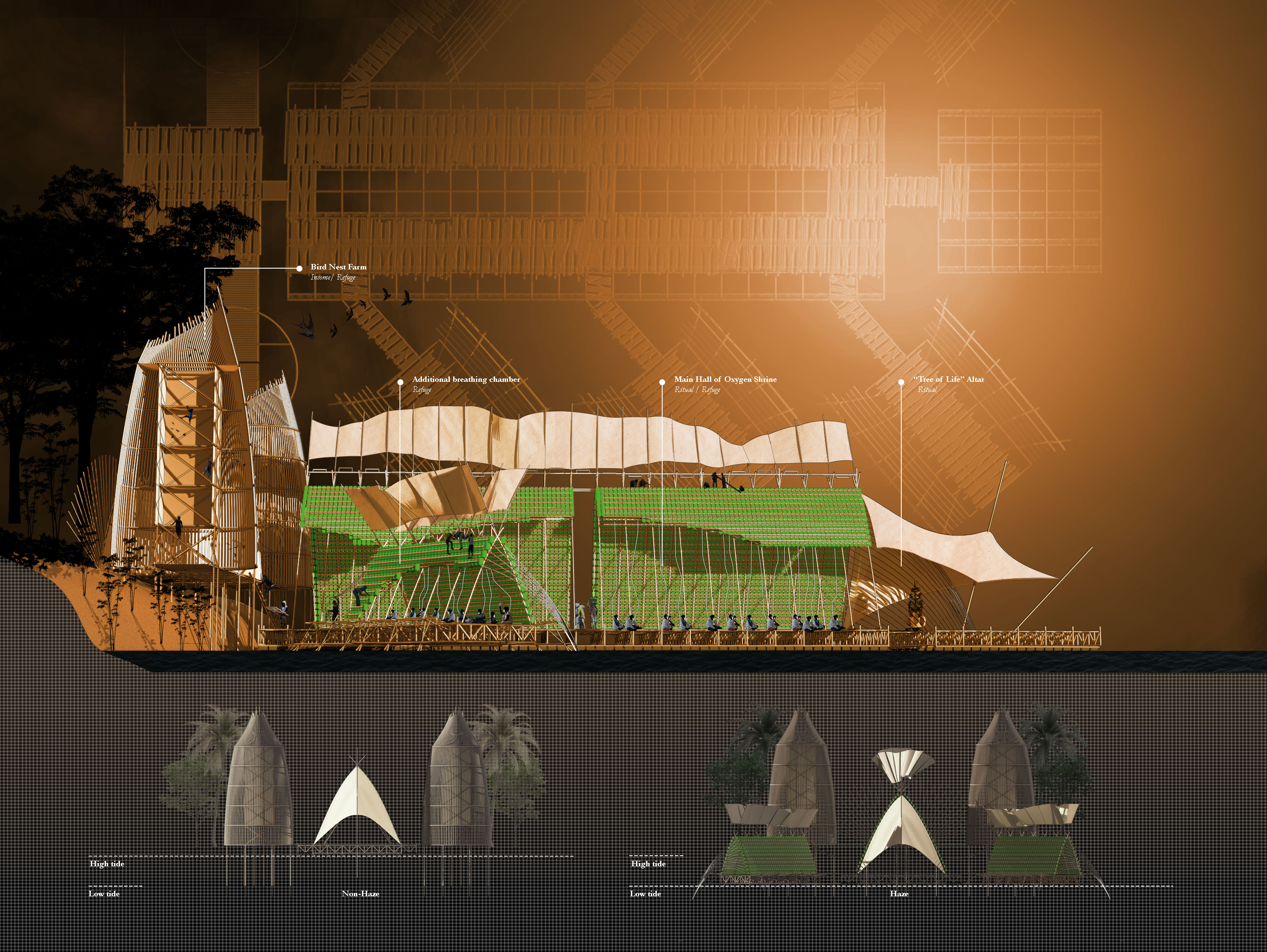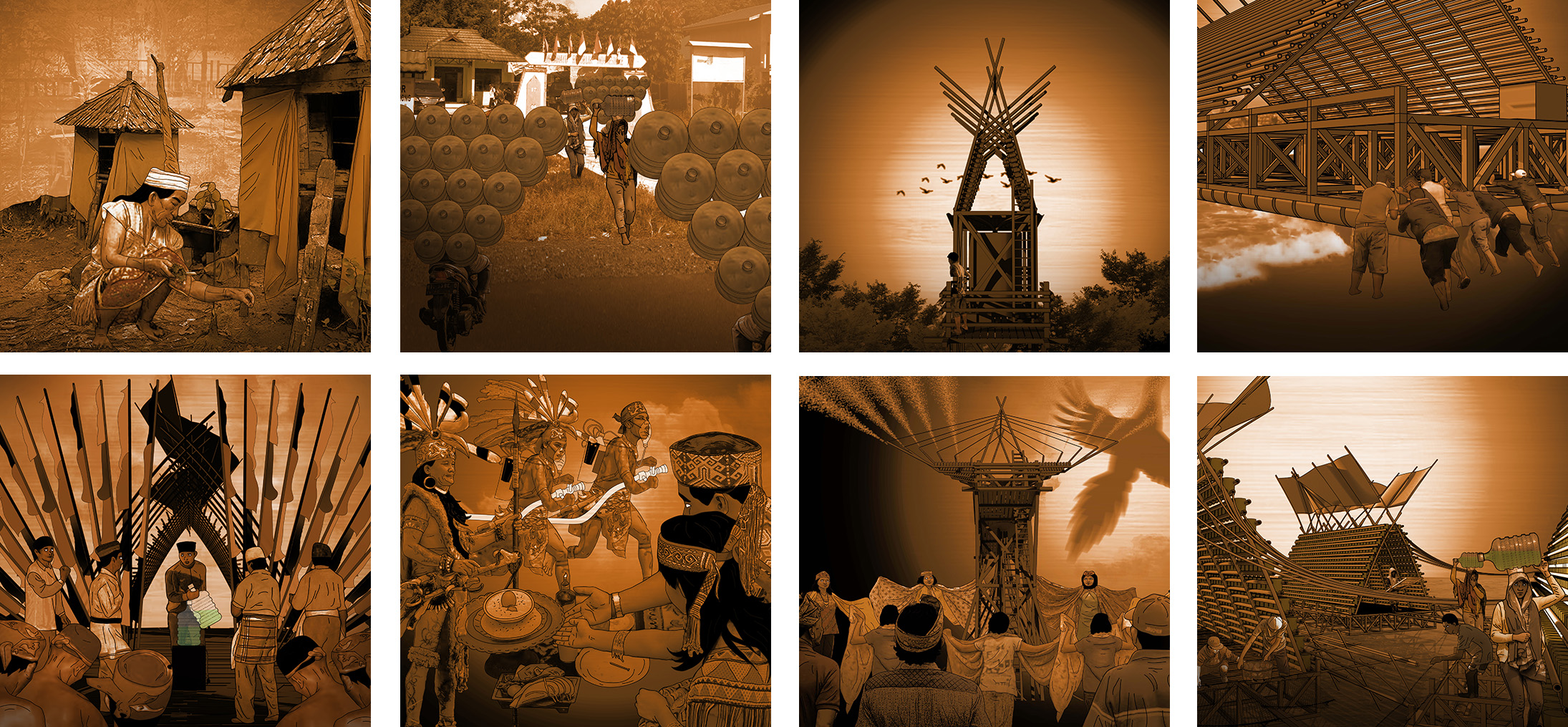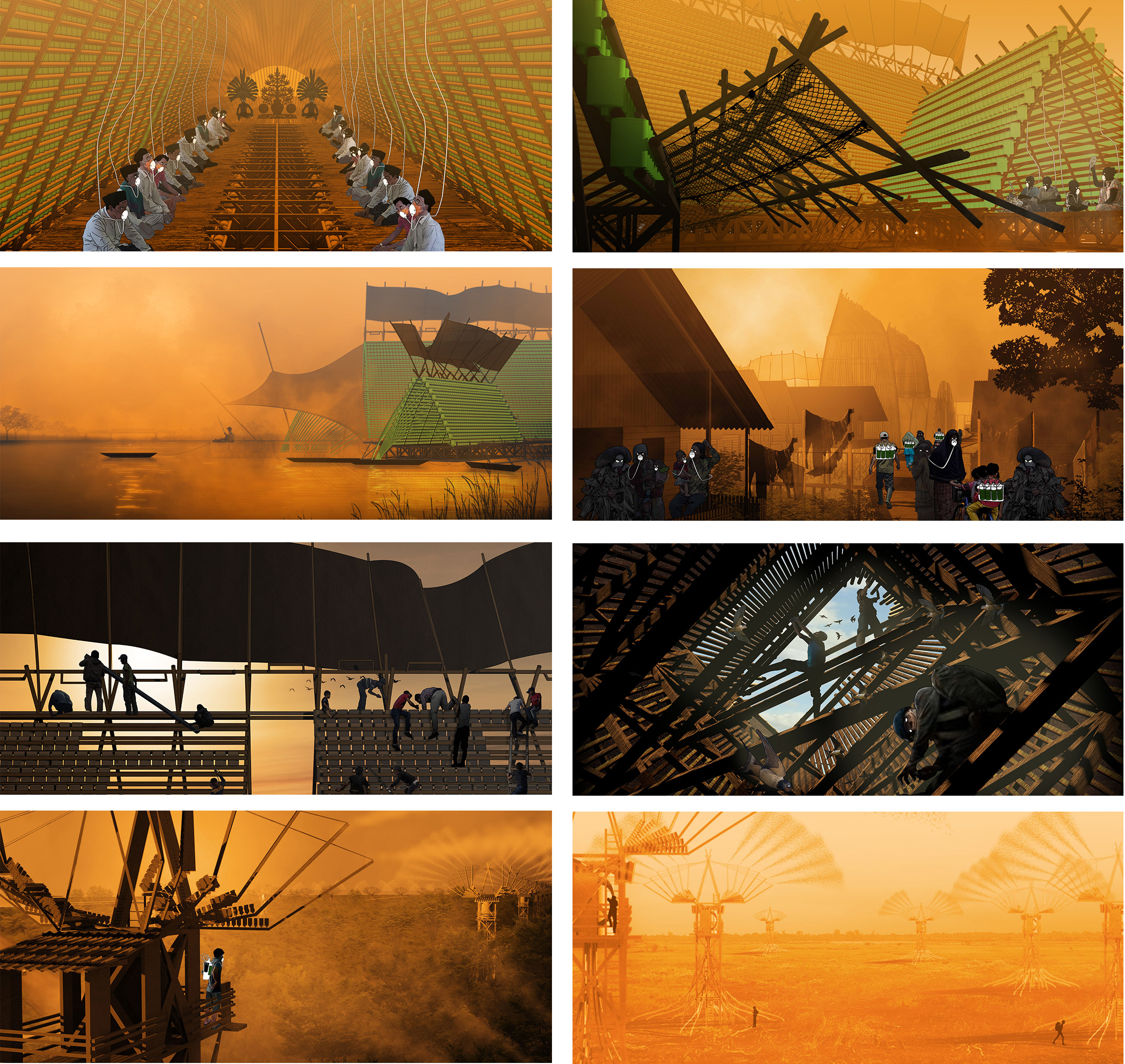Breeding Resilience: Thriving in Orange Air

Breeding Resilience: Thriving in Orange Air
Name: Viany Sutisna
Thesis Supervisor: A/P Tsuto Sakamoto
Site: Desa Gohong, Central Kalimantan, Indonesia
Project Cluster: Speculative Environments
The thesis begins with the issue of the haze due to the peatland fires in Central Kalimantan and the issue of breathing, where the invisible, formless, life – giving element, has been corrupted and threatens our wellbeing. At PSI levels of 2900, the air turns orange due to Rayleigh scattering. The haze as a hyperobject is overwhelming. It is unquantifiable, uncapturable and seemingly infinite, as a substance that resembles a size much smaller than dust but is “massively distributed in time and space relative to humans.”
The thesis proposes that this attitude of “adhoc” and “village engineering” is a much more adaptive and effective mechanism in dealing with the hyperobject haze, and closer to an understanding of ecology itself, as in the writings of Timothy Morton, as compared to anthropocentrically-scaled, heroic constructs of science, economics and politics that merely distance the issue at hand.
As per the animistic beliefs and culture of the indigenous peoples in Central Kalimantan, the architecture itself is moulded through references in folk art and religious rituals. An Oxygen Shrine provides oxygen during the haze period through partnership with the algae, chlorella vulgaris, used in bio-regenerative life support systems (BLSS) in space exploration. The Watchtower rewets peatlands in prevention of fire, drawing water from the existing deep well network. Indigenous rituals become re-adopted as a result of critical environmental conditions, for survival.

Algae – based Breathing Aid Prototypes
Site visit revealed that while city dwellers were privileged to have Oxygen Houses and Mobile Oxygen Vans for oxygen treatment, villagers situated 4-5km away from the city were forced to innovate their own survival mechanisms through the creation of breathing aids made out of plastic bottles, aquarium pumps and a face mask. In an attempt to increase their oxygen production, several algae-based prototypes were developed.

The Oxygen Shrine
During the non – haze period, the Oxygen Shrine lies quietly on the riverside in hibernation, only awakening during specific rituals and village activities. During the haze period, however, the Oxygen Shrine, becomes a place of refuge for those seeking fresh oxygen to breathe, utilizing the algae system. Its form echoes indigenous motifs and animistic beliefs. The Oxygen Shrine is both a place of ritual and refuge for spiritual and physical survival.

The Watchtower
During the non-haze period, it lies in the distance, as an innocent look – out tower. Its quantity and regular interval may be disturbing to outsiders as it is in excess. During the haze period, its mechanical wings open up, creating silhouettes in the haze conditions. Drawing water from the existing deep well network, it sprays water from its wing-like limbs to rewet peatlands prone to fire.


Village Engineering & Masterplan
The adhoc logic of construction evident in the urban fabric is maximised as an advanced form of village engineering. The overall masterplan becomes physical evidence of the survival rituals of the indigenous that follow certain procedures, locations, and seasons.

Rituals as Survival
Specific indigenous practices will have to be re-adopted as a resultant of the critical environmental conditions, that includes asking for spirits permission, gathering of materials and construction, firefighting rituals, rewetting of peatlands and harvesting of excess algae biomass and emergent fishing activity.

Silhouette Effect as an Aesthetic of Resilience
The silhouette effect is a distinct feature of the haze that blurs details and aggregates structures to become borderless black masses. As the structures morph and transform mechanically, foregrounded against the orange-gradient, the distinction between man, animal and village engineering structures are blurred, as survival mechanisms are activated in response to the fire and heat that is at hand, forming an aesthetic of resilience and adaptation.
